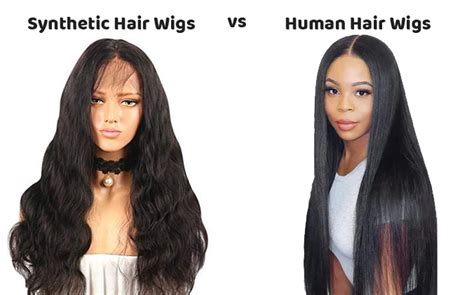Introduction
Women’s human hair wigs have become increasingly popular in recent years, offering a versatile and transformative hair styling solution. With an estimated market size of over $30 billion in 2023, these wigs provide a wide range of benefits, from enhancing appearance to addressing hair loss or other hair-related issues.

Types of Women’s Human Hair Wigs
1. Lace Front Wigs:
These wigs feature a thin, undetectable lace base that is applied to the hairline, creating a natural-looking transition from wig to scalp. Lace front wigs offer a wide range of styles and can be parted anywhere on the head.
2. Full Lace Wigs:
Full lace wigs are constructed entirely of lace, allowing for complete styling flexibility. They can be worn with ponytails, buns, and other updos that would reveal the scalp with other wig types.
3. Machine-Made Wigs:
Machine-made wigs are typically more affordable than lace wigs and come in a wider variety of textures and colors. They are made using a machine that creates tracks of hair that are then sewn onto a cap.
4. Wefted Wigs:
Wefted wigs consist of wefts, or sections, of hair that are sewn onto a cap. They offer a natural, undetectable look but require more maintenance than other wig types.
Selecting the Right Human Hair Wig
1. Color and Texture:
Choose a wig that matches the color and texture of your natural hair as closely as possible. This will ensure a seamless transition and a more natural appearance.
2. Cap Size:
Measure your head circumference to determine the correct cap size for your wig. A snug fit is essential to prevent the wig from slipping or moving around.
3. Hair Density:
Hair density refers to the amount of hair per square inch on the wig. Consider your natural hair density and select a wig with a similar density to achieve a balanced look.
4. Length and Style:
Choose a wig length and style that complements your facial features and personal style. Experiment with different styles to find one that makes you feel confident and beautiful.
Styling and Maintenance of Human Hair Wigs
1. Styling:
- Human hair wigs can be styled using the same tools and techniques as your natural hair.
- Use heat protectant spray before using heat styling tools.
- Avoid over-styling, as this can damage the hair.
2. Maintenance:
- Wash your wig regularly with a gentle shampoo and conditioner.
- Avoid using harsh chemicals or dyes.
- Brush your wig gently to prevent tangles.
- Store your wig in a cool, dry place when not in use.
Benefits of Women’s Human Hair Wigs
1. Confidence and Self-Esteem:
Human hair wigs can enhance confidence and self-esteem by allowing women to achieve the hairstyle they desire, regardless of their natural hair growth.
2. Hair Loss Solution:
Wigs provide a comfortable and stylish solution for women experiencing hair loss due to medical conditions, treatments, or other factors.
3. Versatile Styling:
Human hair wigs offer endless styling possibilities, allowing women to experiment with different colors, lengths, and textures without damaging their natural hair.
4. Protective Covering:
Wigs act as a protective covering for natural hair, shielding it from harsh weather, styling products, and other environmental factors.
Challenges and Considerations
1. Cost:
Human hair wigs can be more expensive than synthetic wigs, so it’s essential to consider your budget before purchasing.
2. Maintenance:
Human hair wigs require regular care and maintenance, which can be time-consuming compared to synthetic wigs.
3. Authenticity:
Some wigs may be advertised as human hair but are actually a blend of human and synthetic hair. Ensure you purchase from reputable sources to guarantee authenticity.
Table 1: Types of Women’s Human Hair Wigs
| Type | Description | Base Material | Styling Flexibility |
|---|---|---|---|
| Lace Front Wig | Undetectable lace base at hairline | Lace | High |
| Full Lace Wig | Entirely lace construction | Lace | Maximum |
| Machine-Made Wig | Machine-sewn tracks of hair on a cap | Fabric | Medium |
| Wefted Wig | Sewn-in wefts of hair on a cap | Fabric | High |
Table 2: Benefits of Women’s Human Hair Wigs
| Benefit | Description |
|---|---|
| Confidence and Self-Esteem | Enhances appearance and empowers expression |
| Hair Loss Solution | Provides a comfortable and stylish covering |
| Versatile Styling | Allows for endless experimentation |
| Protective Covering | Shields natural hair from environmental damage |
Table 3: Styling Techniques for Human Hair Wigs
| Technique | Description |
|---|---|
| Blow Drying | Creates volume and shape |
| Straightening | Smooths and eliminates frizz |
| Curling | Adds curls and waves |
| Coloring | Changes the color or adds highlights |
Table 4: Maintenance Tips for Human Hair Wigs
| Task | Frequency |
|---|---|
| Washing | Every 2-3 weeks |
| Conditioning | Every 4-6 washes |
| Detangling | Daily |
| Storing | Cool, dry place when not in use |
Conclusion
Women’s human hair wigs offer a versatile, transformative, and beneficial hair styling solution. By understanding the different types, selecting the right wig, and following proper styling and maintenance techniques, women can embrace their beauty and feel confident in their appearance. As the industry continues to evolve, expect even more innovations and applications for these wigs in the future.
